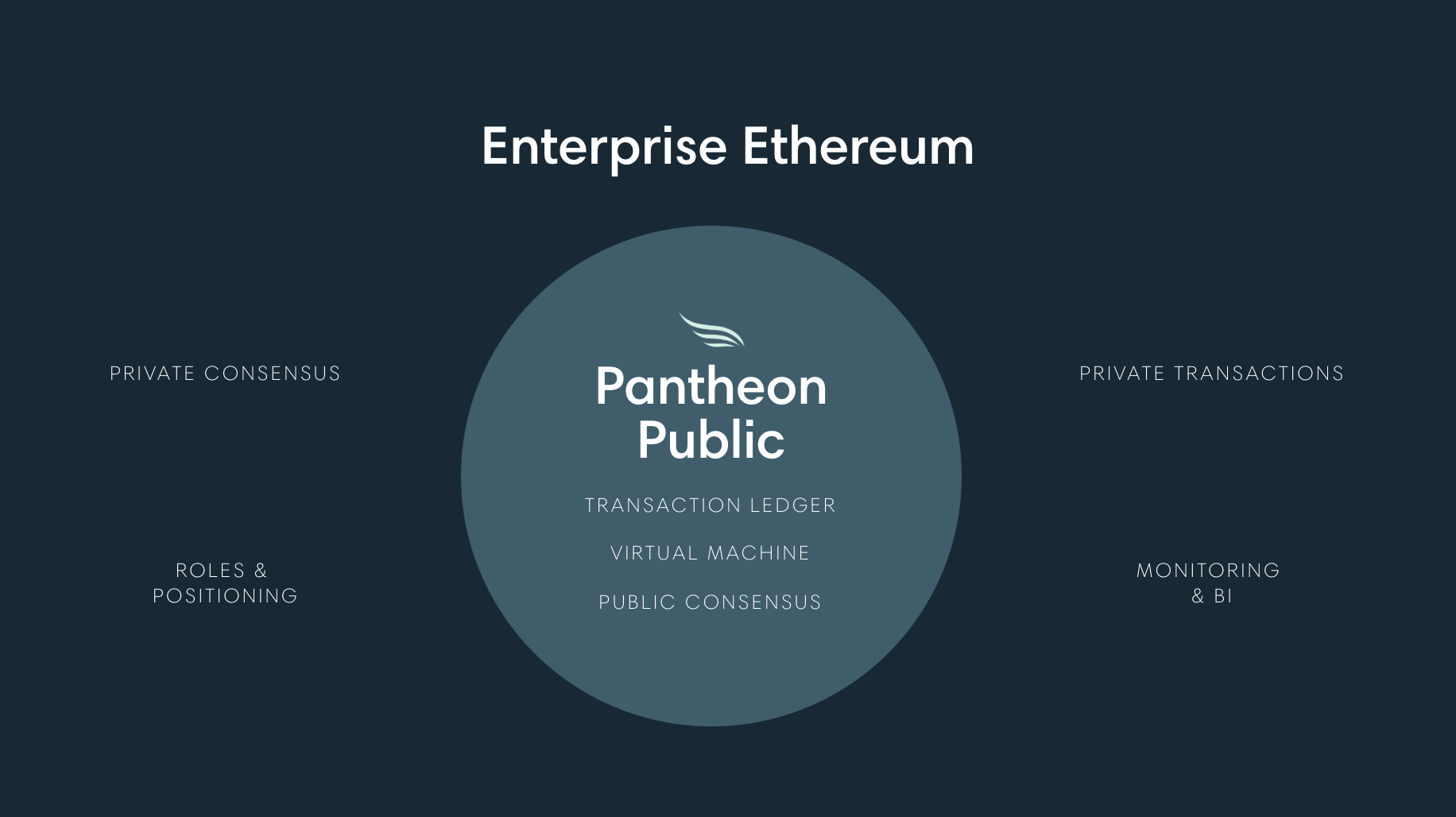
PegaSys, the protocol engineering team at ConsenSys, has announced the release of Pantheon, an open source Ethereum client developed under the Apache 2.0 license and written in Java. Pantheon will be the center of the company’s future Ethereum-based enterprise tools, the company said on Tuesday.
With the release, users can run nodes to connect to the Ethereum mainnet, Rinkeby or Ropsten testnets, or create their own private networks. Pantheon currently is updated to the Constantinople release and implements multiple consensus algorithms, including Proof of Work and Proof of Authority (clique PoA) for fast private networks, with IBFT 2.0 coming in the next release. The company has also added an importer tool that can get a node up to the current block in less than a day.
With Pantheon Core, PegaSys said it seeks to create a “vibrant ecosystem on an open source community” by providing enterprises with the platform to develop applications requiring secure, high-performance transaction processing in a private network.
Explaining the motivation behind creating Pantheon, PegaSys said:
“Our motivation to contribute a new client is threefold: to build something that can get to enterprise production, to support and scale mainnet, and to prepare for the future of Enterprise Ethereum.
“Design and architecture decisions have been aimed at clean interfaces and modularity, with the goal of making Pantheon a platform for others to build on. This client-as-platform idea means we hope the community creates new modules (for consensus, privacy, databases, analytics/reporting, and so on) that can be configured as needed by an enterprise to suit a production environment.
“We aim to provide technical support eventually all the way up to enterprise-grade, and by having our own client can make the changes or bug fixes that are needed to meet modern SLAs, and to add enterprise-specific requests to our roadmap.”
The Pantheon client currently supports ether token mining and common smart contract and decentralized application (DApp) development, deployment, and operational use cases, using tools such as Truffle, Remix, and web3j.
Pantheon includes a command line interface and JSON-RPC API for running, maintaining, debugging, and monitoring node operations in an Ethereum network. Developers can use the API via RPC over HTTP or via WebSockets transport, and Pub/Sub is supported.
Released on Tuesday at Devcon, the annual event of the Ethereum developers community taking place this year in Prague, Czech Republic, Pantheon will be the core of Pantheon Enterprise, which will add permissioning and privacy as additional modules.
An Enterprise Alpha is planned to be released in Q1 2019, with a production-grade client to be related some months afterward.
PegaSys (Protocol Engineering Groups and Systems) is a 50-person team dedicated to enterprise grade blockchain at ConsenSys. The team has been working on key challenges related to Ethereum scaling, privacy, and security, and collaborates closely with the Enterprise Ethereum Alliance (EEA) as well as other standards bodies like W3C and IEEE to review specifications and provide inputs.

